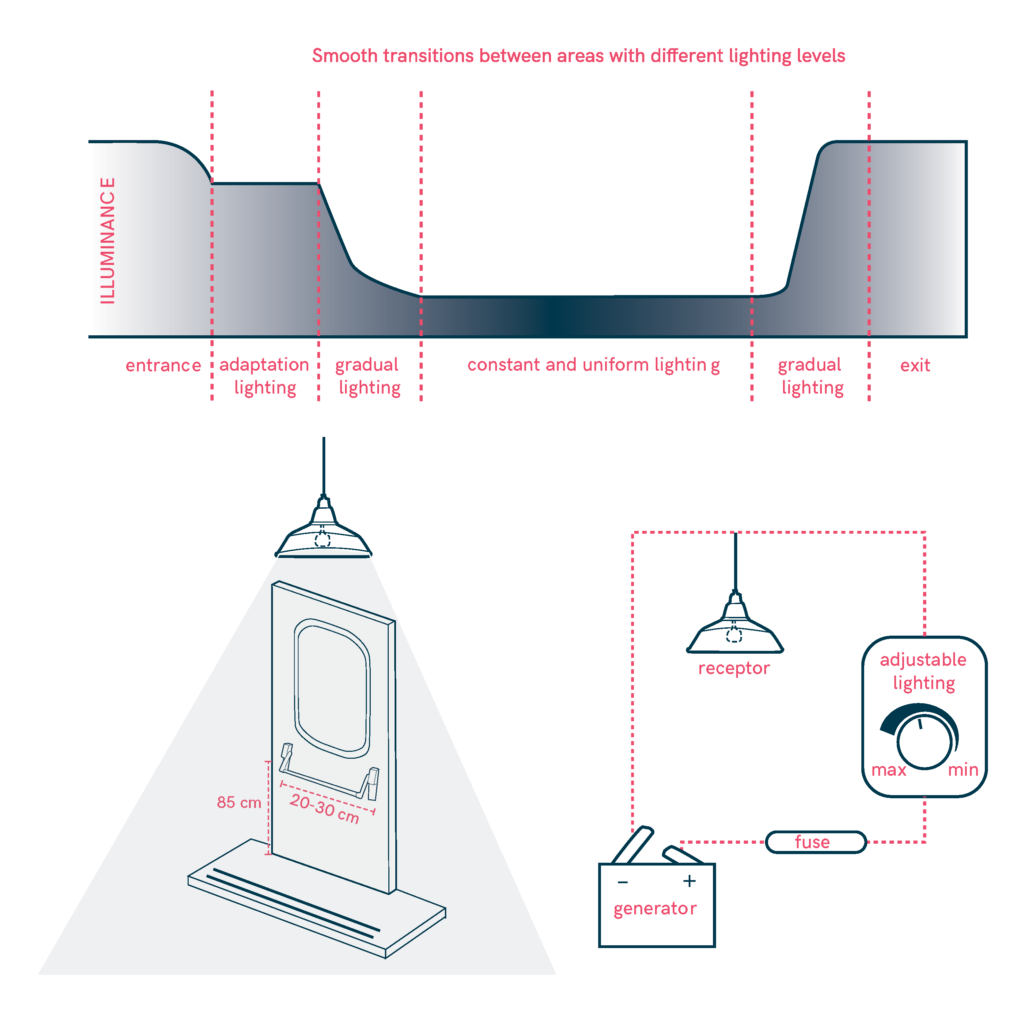Lighting Design
Good lighting design is essential for both safety and comfort. Proper lighting should be consistent and avoid extreme contrasts that may lead to discomfort or vision problems. It must also account for the specific needs of different spaces within a building.

- Ensure smooth transitions between areas with different lighting levels to prevent eye strain or glare.
- Maintain higher levels of daylight illumination than nighttime lighting. This ensures safety, particularly near access points and doorways, reducing the risk of not seeing obstacles or level changes.
- Avoid backlighting, such as from windows at the end of corridors, and minimize abrupt lighting differences that may distort space perception.
- Implement adjustable lighting that caters to the needs of users with visual impairments. This allows for personalized brightness levels in various spaces.
Sources
- https://accessible-eu-centre.ec.europa.eu/content-corner/digital-library/en-172102021-accessibility-and-usability-built-environment-functional-requirements_en
- https://breeam.es/
- https://www.usgbc.org/leed
- https://evalore.es/servicio/certificaciones-medioambientales/
- https://www.codigotecnico.org/pdf/Documentos/SUA/DccSUA.pdf
- https://universaldesign.ie/built-environment/building-for-everyone/building-for-everyone-full-series
